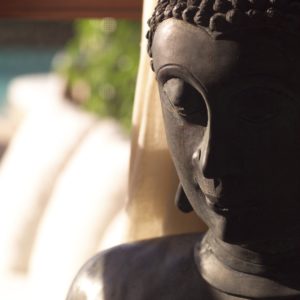
When you are not a member of a specific faith, it can be easy to jump to conclusions about what others believe. While there are hundreds of different religions currently being practiced around the world, a vast majority of people only know the details about the religion that they belong to. This makes sense, as a religion is a personal method for connecting to a higher power and joining with a community to share the experience. When you aren’t in a specific community, it can create many mysteries surrounding the practices of others.
One religion that tends to confuse outsiders is Buddhism. Though it is one of the oldest and most practiced religions on the planet, a large chunk of people still have absolutely no idea what the religion entails. On top of this, there are many misconceptions about Buddhism that prevent people from understanding the truth. To get to the heart of the matter, it can be a good idea to take a look at some of the more common misconceptions and learn how to separate fact from fiction. This can help you to gain a better understanding of the religion.
Meditative Practices
For those without any idea of what Buddhism is, there are specific images that might be conjured by hearing the word “Buddhist.” One of the biggest visions that a person might see in his or her mind is a bald person in bright robes meditating in a temple. It is true that meditation is a very big part of Buddhism for some, but it is not a practice that is engaged in by all Buddhists. In fact, recent studies conducted across the planet point out that Buddhists are less likely to meditate than members of other religions.
It is easy to see where this misconception comes from. Buddhists believe in following the teachings of Buddha, and one of the biggest stories surrounding Buddha is how he sat beneath a tree in a meditative state. Modern Buddhists, specifically in America, believe that meditating is the core of the story. In truth, many Buddhists believe that Buddha was simply getting in touch with the act of sitting still. By sitting, the Buddha was able to focus and meditate. This misconception is reflected in the statistics that show meditation is really only a strong practice amongst Western Buddhists.
Jolly Buddha
If you were to walk into a store that specialized in selling artifacts from Eastern religions, you most likely would see a couple of familiar images. One of the more common sights in these types of shops is a statue of a golden Buddha. In most cases, this Buddha is depicted as being fat, shirtless, and laughing. People who are not of this faith often believe that this image is of Buddha himself. In truth, that is not actually the case. Though people still debate the exact details, the person being depicted as fat and laughing is another.
The original Buddha is often referred to as Siddhartha Gautama. The heavyset man with an open shirt and permanent grin is not Gautama. Scholars have argued that this familiar image is most likely trying to depict a Buddhist monk in a state of laughter. Many people have made attempts to guess the identity of this monk, with some claiming it is a man named Budai and others claiming it is an incarnation of another Buddha from earlier. Regardless of who the statue depicts, it is important to remember that it is not the Buddha people refer to within the religion.
Learn and Grow
Buddhism is unique when compared to the other popular religions of the world. There are many differences that set it apart. Still, there is also common ground to be found. By understanding the beliefs and moving through misconceptions, you will be able to learn and grow as a person with an awareness of world religions.

